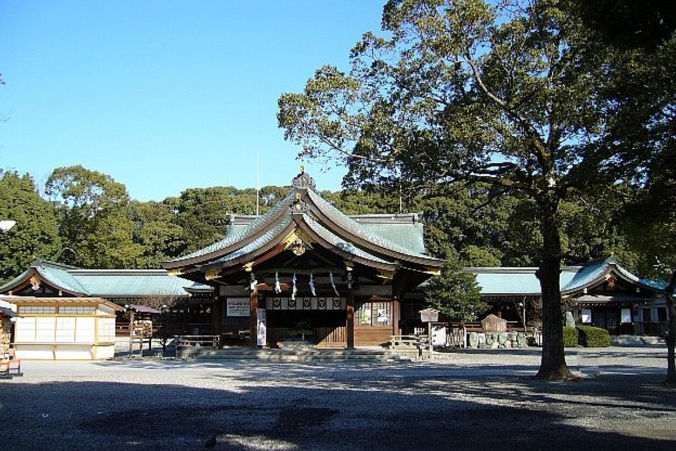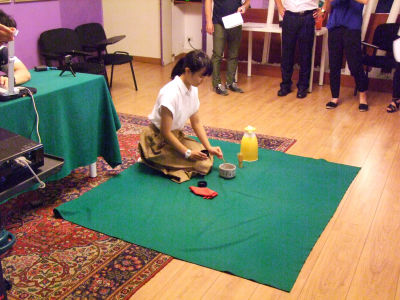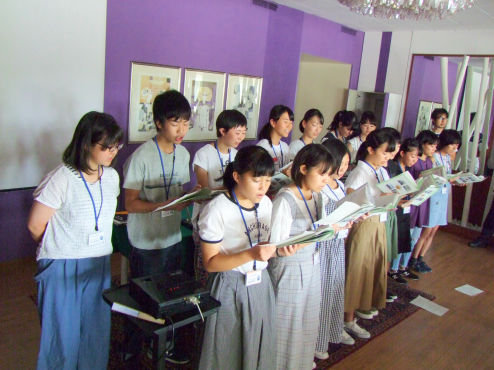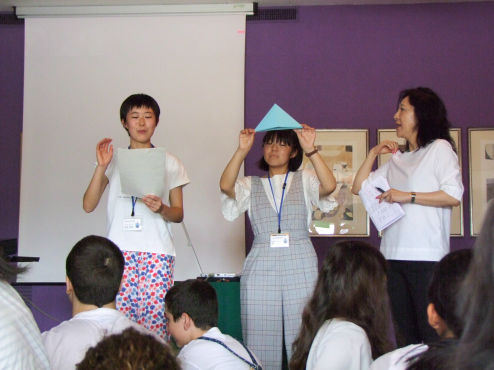
City of Japan
Prefecture of AICHI
380,868 Inhabitants
ICHINOMIYA (一 宮 市 Ichinomiya-shi) is a city located in the prefecture of Aichi, Japan. The city is often called Owari-Ichinomiya to avoid confusion with another Ichinomiya (now part of the city of Toyokawa). As of March 2015, the city had an estimated population of 378,829 inhabitants and a population density of 3330 people per km².
Ichinomiya is historically a center for woolen fabrics and many aspects of textile production continue to thrive in the city.
Ichinomiya literally means "the first sanctuary" of the province. In the case of this city, it was the Masumida sanctuary of the province of Owari. Ichinomiya developed as Monzen Machi (temple city - religious city) from the Heian period.
The modern city of Ichinomiya was founded with the establishment of the municipal system on April 1, 1889. It was elevated to the city state on September 1, 1921. The city annexed the neighboring villages of Haguri and Nishinari in 1940, and with eight other municipalities surrounding (the villages of Chiaki, Tanyo and Kitakata, and the cities of Asai, Yamato, Akiwara, Oku and a part of Imaise) in 1955.
On 1 April 2002 Ichinomiya was designated as a special city, with greater local autonomy. On April 1, 2005, the city was further expanded by absorbing the city of Bisai and the city of Kisogawa (from the Haguri district) making it the fourth largest city in Aichi prefecture, behind Nagoya, Toyota and Toyohashi.
(Source Wikipedia)

Ichimin, the mascot of the city!
The shape derives from "Twin Arc 138" and the name is ICHIMIN (イ チ ミ ン).
It's so cute, true!
138 comes from ICHINOMIYA.
If we break off ICHI-NO-MI-YA the conversion in number results and changes to 138
In Japanese, ICHI is 1 (one), MI is 3 (three) and YA is 8 (eight). Did you understand!!

The Ichinomiya Tanabata festival, also known as "Star Festival", is held to show gratitude to the Yorozu-hata-toyo-akitsushi-hime-no-mikoto, Hatori god of tissues, and to pray for prosperity in this area; Ichinomiya's leading industry.
The Shrine of Hatori is located in the western part of the main hall of the Sanctuary of Masumida, from where the name of Ichinomiya originated, and the Shrine of Hatori god is the mother of the god kept in the Sanctuary of Masumida, Ame-no- Hoakari-no-Mikoto.
This festival started in 1956 and takes place for 4 days from Thursday and ends on the last Sunday of July. Based on the legendary characters of Orihime and Hikoboshi, often associated with fabrics, the whole city joins this "Textile Thanksgiving Ichinomiya Star Festival", the biggest summer festival in the city. With the traditional Fukinagashi decorations fluttering on the shopping streets and the beautiful decorations made by the local population, the festival is praised as one of the three main Star Festivals in Japan together with the Sendai Star Festival and the Shonan Hiratsuka Star Festival and welcomes over 1.3 million of visitors each year.
Learn more...

Masumida Jinja Shrine in Aichi Prefecture is everything you would expect from an ancient Shinto shrine. Nice, quiet, elegant, timeless. With at least 1,400 years of recorded history, it is believed that the sacred Masumida was founded in 628 BC and was Ichinomiya, the first major shrine in the province of Owari, (Western Aichi) dedicated to the god "Kami" Ame-no-Hoakari-no -Mikoto, an ancestor of the Goddess of the Sun, Amaterasu. It is this sanctuary that gives to the surrounding city, its name Ichinomiya. Masumida was patronized and worshiped by the Samurai lords of Owari, the Oda clan, and later, the Tokugawa clans that ruled the area.
The areas of the sanctuary are large and tree-lined. The main prayer hall is an elegant and simple structure with a royal aura. The large gate projects an imposing, strong and protective image. The carp slowly swim in the pond and the turtles make themselves alone on the rocks. Everything is peaceful.
Learn more...

"Twin Arch 138" was built as a main park. Two hyperbolic arches of different heights and the central elevator shaft symbolize "the majestic flow of the 3 Kiso rivers". The highest point of the tower is 138 meters, in honor of the city of Ichinomiya.
138 Tower Park houses this symbol of the Ichinomiya Skyline: Twin Arch 138.
138 Tower Park occupies 20.4 hectares of the Kiso Sansen National Government Park, the largest national park in Japan, located between the prefectures of Aichi, Gifu and Mie.
The symbolic tower of Ichinomiya - Twin Arch 138 - derives its name (and the height of its highest point) from the fact that the sound "ichi" also means "1", "mi" indicates "3" and "ya" it can mean "8". In any case, the observation deck at 100 meters offers a fabulous view of the sky.
The park offers the fun of observing nature; on the west side, feel the fresh breath of nature in the natural area of Moku Moku Paradise which includes forests, mountains, hills, groves and ponds.
Learn more...
The twinning Treviso - Ichinomiya
Ichinomiya, very famous for its textile production, has for many years a collaboration with Treviso for the mutual promotion of the territories and their industrial, tourist and gastronomic specialties, strengthened by the twinning between the two municipalities in January 2013.
Ichinomiya has been supplying its fabrics for many years to the students of the Degree in Design for Fashion in Treviso, there is an activity of mutual promotion between the two territories, moreover, Ichinomiya offers some internship opportunities in Japan.
The twinning presented on this site is the one among the 16 best students of Ichinomiya third-middle and a group of students / sportsmen from Treviso. This meeting takes place every year in the month of August.t.

Respecting their culture, they have prepared tea, a symbol of their hospitality and courtesy.
Elements that we find in all the oriental arts but especially Japanese. Small gestures that hide a big heart.

One thing we could not wait for was that the boys would sing for us 'O Sole Mio, of course in Japanese. Towards the end, the current was missing and so the musical base, they did not even have a moment of hesitation and ended up singing without music. Very good.

This Buddhist-Confucian custom, during which people return to their native places and visit and clean the graves of their ancestors, at a time when the spirits of the ancestors are supposed to revisit the domestic altars.

One thing that could not miss was to spend some time to teach us their art of creating objects with paper, Origami. We have all been involved in building an Air that, under their control, has also been good to us.

Like all good things, sooner or later they end, the two and a half hours spent with them flew, to greet us in a special way they made us pass under a tunnel made by their arms.
This also made us understand how much kindness and sympathy they have within their soul.